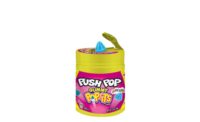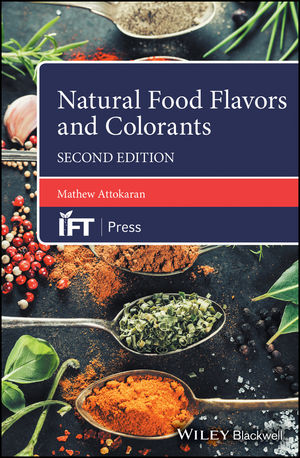Companies 'juiced' with new gummy products
Manufactures look to natural flavors, better-for-you innovations to juice up by their gummies and jellies

The gossip in the gummy and jellies industry is juicy. With cleaner labels, natural colors and the inclusion of real fruit juice, new gummy products have burst onto the scene offering customers a more beneficial way to chew on their favorite candies.

Photo courtesy of National Starch
By Grace Weitz
The gossip in the gummy and jellies industry is juicy. With cleaner labels, natural colors and the inclusion of real fruit juice, new gummy products have burst onto the scene offering customers a more beneficial way to chew on their favorite candies.
For starters, more and more consumers are reading labels, which has resulted in many different confectionary companies turning to healthier ingredients and looking for ways to make their products more natural.
Gummies and jellies are no exception. In a $900 million-dollar chewy candy market, gummies are latching on to trends that have consistently shown up in other areas of the candy industry. Overall, better-for-you innovations are leading the gummy segment of soft candy.
According to a 2010 non-chocolate confectionery report from Mintel, a Chicago-based research firm, 45% of adult respondents prefer to see the claim "made with real fruit" on their nutrition and ingredient labels.
"Real fruit juice is a real grabby term in the candy industry right now. People don't want artificial stuff, they want real fruit juice in their candies," says Marcia Mogelonsky, a global market analyst for Mintel.
Mogelonsky also mentions that the inclusion of real fruit juice in items has led to more exotic and interesting flavors. Flavors such as goji berry, guava and pink grapefruit have wiggled their way into gummy products.
"[They're] flavors that you normally wouldn't have come across in the artificial flavoring world because in the artificial flavoring world you're creating cherry that tastes like real cherry, but you're not looking for more sophisticated flavors that you tend to lean to when working with natural flavors," says Mogelonsky.
Unique flavor profiles can be found in treats such as Bissingers' Gummy Pandas. The American confectionary company has added such interesting tastes to its extensive product line as apricot green tea, lemon ginger yuzu, raspberry yumberry, blueberry acai, pink grapefruit and pomegranate white tea. Each Panda product uses either natural fruit flavors or genuine fruit extracts often resulting in a natural punch of vitamin C.
The organic addition of vitamin C also has shown itself as a logical trend amongst gummies along with products that are free from artificial flavors, colors and preservatives. Mogelonsky points out that this is just a beneficial byproduct of using real fruit juice.
If gummies tend to have vitamin C in them it's because they're using fruit flavors that have vitamin C in them naturally. For example, new products like Sunkist Dark Chocolate Orange Slices from Jelly Belly, which were released in August 2010, contain no added preservatives and 100% DV of vitamin C. The orange flavored pectin jells, which feature a rich dark chocolate coating, are made with real orange juice, an excellent source of vitamin C.
"Jelly Belly uses real ingredients whenever we possibly can – and by real ingredients I'm referring to fruit juices, concentrates and purees – to stay in line with our company heritage," notes Dennis Spiller, Jelly Belly’s director of sales. "When it came to manufacturing the orange slice there was never a doubt that we were going to use real orange juice to get that orange flavor."
Spiller goes on to explain that the inclusion of real ingredients such as natural fruit juice in Sunkist products help promote candy in a whole new light.
"From our stand point as a high end manufacturer we want to draw more attention to the fact that we do use real ingredients," says Spiller. "We just want to make sure that when it comes to confections there are some positive attributes and it's not just sugar and a belly filler…when you're using natural ingredients obviously you're going to have the benefits of those items."
Another product Jelly Belly has found much success with has been their Beanaturals Superfruit Mix. Launched in 2010, the line features an assortment of flavors including Acai Berry, Barbados Cherry, Cranberry, Blueberry and Pomegranate.
Each bean in the mixture has been created with real fruit juices, no artificial colors and no artificial flavors. According to Spiller, this particular item has performed very well for Jelly Belly and is continuing to grow, a success story that mirrors the market.
Spiller cites gummies and jellies as a growing sector of the candy industry and what he calls an "opportunity category" for Jelly Belly, indicating that the company will continue to look into new products in this division.
Despite all of these benefits, the inclusion of real fruit juice does have its potential disadvantages depending on the consumer. Mogelonsky, a gummy aficionado herself who has been eating the treat since she was young, says that the gummies she grew up with were a lot more aggressive in flavor because of the artificial flavoring.
She notes that the flavors of gummies made with real fruit juice tend to be more subtle. Regardless of this slight shift in flavor intensity, gummies continue to be a very attractive product in the U.S. as a part of the chewy candy sector, which achieved the highest total U.S. retail sales at an estimated $2.2 billion in 2010, according to Mintel.
And the company that tops its all – Mars – leads this sector with $225 million in FDMx sales. Fueled by the phenomenal success of its Starburst and Life Savers Gummies brands, Starburst makes up 8% of the chewy candy market while Life Savers Gummies has increased sales 17.2% from 2009-2010. Both brands are officially manufactured by the Wm. Wrigley Jr. Company (Wrigley), which became a subsidiary of Mars, Inc. after they successfully acquired the business back in October 2008.
Life Savers Gummies have been around since 1992, but their latest product, LIfe Savers Gummies Sweet Strings 'N Sour Rings, were released in 2009. The uniquely shaped treats come in a combination of sweet and sour flavors, including sweet cheery and sweet raspberry strings, and sour fruit punch and sour green apple rings.
In the spring of 2008, Wrigley added GummmiBursts to their already popular Starburst line. The liquid-filled gummies are made with real fruit juice. Available in original and sour flavors, Wrigley introduced Starburst GummiBursts Flavor Duos to its portfolio in 2010. Flavors for the new confection include: strawberry watermelon, cherry fruit punch, green apple strawberry and lemon cherry.
"It makes sense that [Mars] would introduce gummy candies to extend their lines because Starburst and Life Savers have high name recognition," says Mogelonsky who highlights kids love of gummy candies as a reason for two already successful products to delve into the market.
Private Label
While Mars has permeated itself throughout the gummies sector, they aren't the only company. In the last year private label has had its best performance in the chewy candy segment with nearly 15% of the market. According to Mintel, FDMx sales increased to $144 million from 2009-2010 – a growth of 12.5%. Companies like Target put its 25 cents into the gummieball machine with the introduction of Target Edible Gummy Eyeballs for Valentine's Day 2010.
The heart-shaped packs displayed the message "I have my eyes on you!" And Target treats aren't the only private label gummies appearing on the market. CVS introduced CVS Gold Emblem Gummy Mellos in late 2009.
The confections are made with both natural and artificial apple flavors and complement a host of other candies being marked as old-fashioned penny candy. In fact, according to Mogelonsky, 25% of new gummy products launched in the last year in the United States have been private label.
Mogelonsky cites the omission of a clear gummy market leader as a reason for this increase in the private label sector.
"Mars has a quarter of the market for all their chewy gummy products put together. That means 3/4 of the market is basically up for grabs," says Mogelonsky. "The reason private label can grow is there is no one single associated brand that is sort of the king of gummies."
Just in the past year there have been around 60 gummy additions to the private label sector. Along with Target and CVS, Duane Reade, the popular New York pharmacy, also has their own private label line called DR Delish Organic Gummy Bears.
The explosion of private labels into the marketplace could have drastic affects on the bigger manufacturers such as Mars.
"Once private label moves in with their favorable prices, people will be loathe to switch to Mars once they've already established that the private labels are fine for them," she explains.
Without a clearly dominant leader in the gummies and jellies industry, Mogelonsky sees private labels continuing to grow into the future. And if private labels maintain their success things could really start to get juicy in this popular sector.
Looking for a reprint of this article?
From high-res PDFs to custom plaques, order your copy today!









